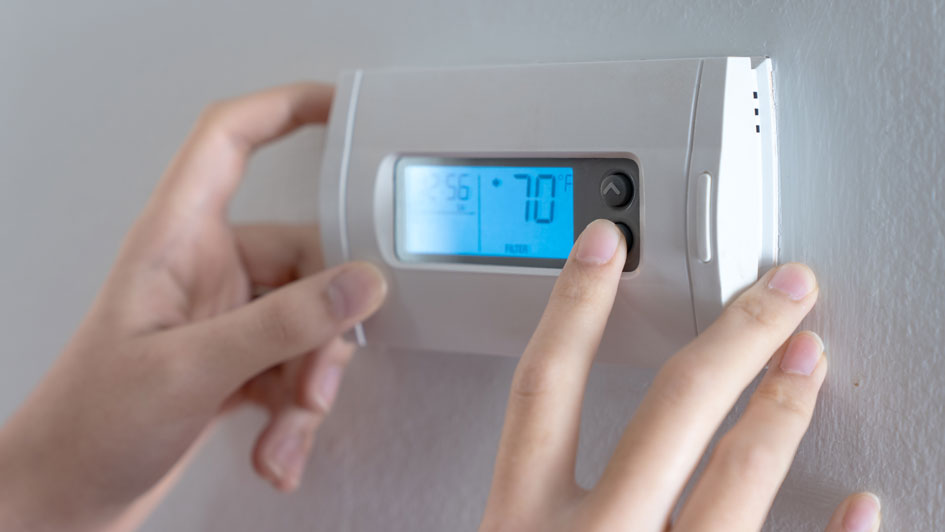
It's always nice when we manage to save money on our utility bills, but you should know there’s a way to do it when you aren’t even home.
It starts with your thermostat. By making the most out of your thermostat, you can tailor the temperature to your needs. That means you can have different temperature settings for when you’re at home, away or even when you’re asleep.
By trying a few of these schedules, you have more time to enjoy pleasant temperatures while keeping more money in your pocket. Check out our guide on how your thermostat doesn't have to use up all your summer spending money:
While at Home
Whenever you're at home, you want comfortable temperatures. It's only natural to want your thermostat lower in the summer while inside to make the most of the cool air.
But the most energy-efficient temperatures for when you're in your home during the summer is in fact anywhere between 78 and 80 degrees Fahrenheit. This way, you'll avoid the worst of summer while still keeping your energy bills low.
While Out of the House
When setting the temperature for whenever you're gone, it's extremely common to move the thermostat higher for while they're gone.
For some homes, you can set the thermostat to temperatures as high as 88 degrees while no one is home and then lower it back to the sweet spot of 78-80 degrees when you or a family member return. This way, your air conditioning won't have to work constantly to keep an empty house cool.
While Asleep
When it comes to sleeping in the summer, you want a temperature that's nice and cool. A great place to start is between 68-72 degrees Fahrenheit. This will keep you from getting too hot or too cold while you're trying to sleep.
Other Strategies for Lowering Energy Use:
- Install a smart thermostat: Using a smart thermostat in the summer helps save money on energy costs since it can plan your temperature adjustments according to your lifestyle and home environment. It'll take care of making changes while you are home or sleeping, while allowing it to warm up when the house is empty. Using reputed brands and models such as the Lennox iComfort, you have the ability to remotely access and change the temperature through your smartphone, tablet or laptop. Planning smart thermostat installation in your Temple/Belton home can be the simplest strategy for maintaining comfortable, yet energy-efficient temperatures no matter where you are.
- Upgrade your HVAC system: A new HVAC system saves money right from the start. By investing in a more energy-efficient system, you can also count on lower utility bills since more efficient equipment requires less energy to heat and cool your home. Air conditioning installation in Temple/Belton is a breeze for experienced professionals like Bell Air Conditioning Inc.
- Keep up with AC maintenance: Hiring a skilled professional to perform regular air conditioning maintenance in Temple/Belton can have a big impact on your monthly energy use. With regular cleaning of the coils, checking for damage and clearing ventilation of dust and debris, you may notice your HVAC system run more efficiently. Increasing efficiency also limits strain on important or delicate components and lowers operational costs, lowering total energy use and eventually the total monthly bill.
- Clean or replace the air filter on a regular basis: Cleaning or replacing the air filter regularly saves money by helping air flow efficiently through your air conditioner. When filters become clogged, an AC unit has to work harder, and the added strain may impact the system’s life span and cause breakdowns.
- Verify your attic has enough insulation: Insulation is a crucial component for any energy-efficient home, securing the hot air outside and the cool air inside during the summer. The North American Insulation Manufacturers Association (NAIMA) offers an official recommendation stating homeowners in souther states should have at least 13-14 inches of insulation, while states further north need 16-18 inches.
- Inspect your ductwork: A leak in the air ducts could increase your energy bills much more than 20 percent, plus it can also lead to problems with your water heater, clothes dryer and other appliances throughout your home. Watching for signs of leaks and sealing them can fix both of those problems.
- Seal all other leaky spots in your home: Sealing up other leaks in your home with caulk, foam sealant or weather-stripping helps keep things cooler during those hot summer days. You should also check for any gaps around windows, doors and even outdoor fixtures. Making time to seal leaks now can help you save a lot over time.
